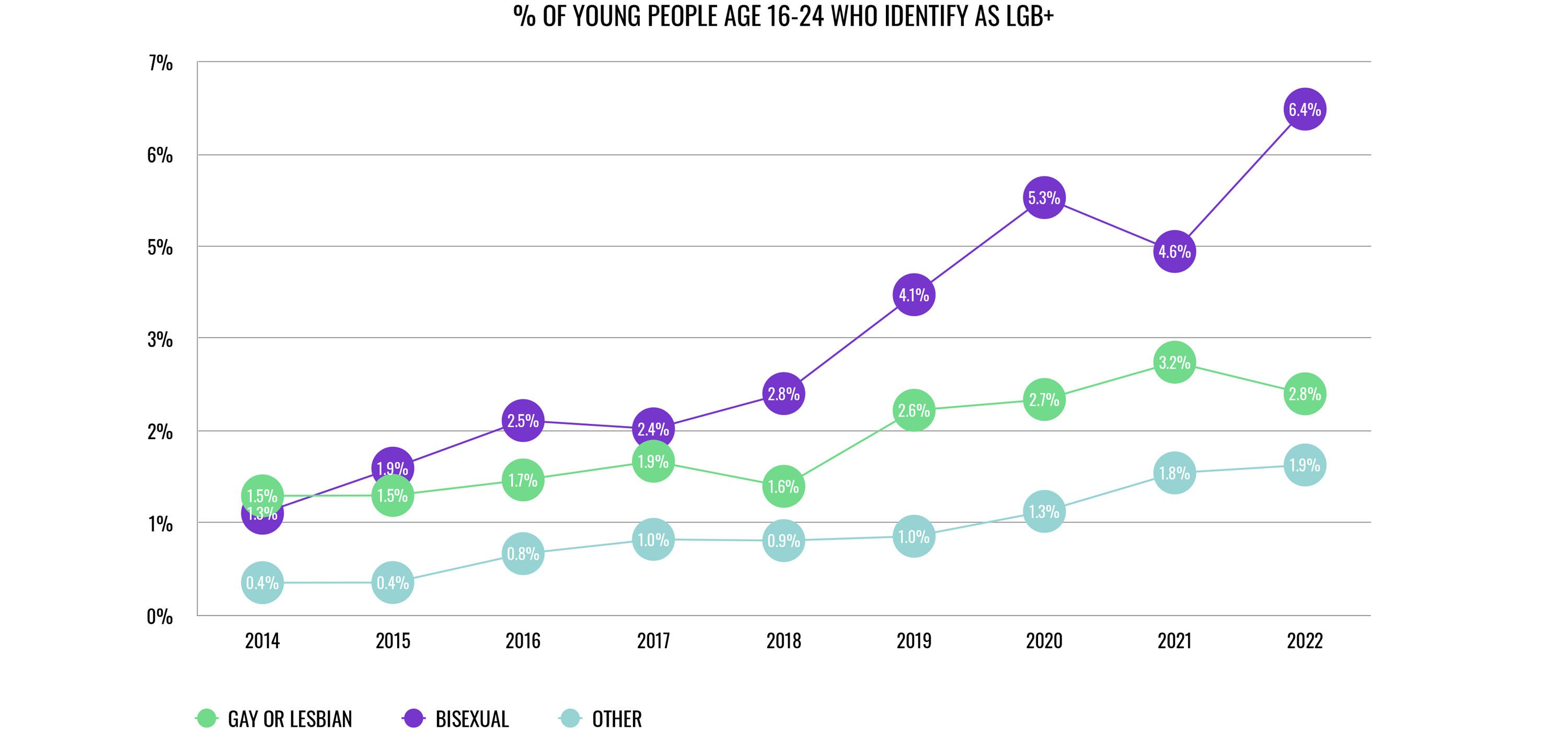
It's clear things are changing when it comes to how young people perceive their sexual orientation. In the 2021 census, there was a notable increase in the number of 16-24 year olds identifying as Lesbian, Gay, or Bisexual (LGB+) and this group were more likely to identify as LGB+ than any other age group. The primary contributor to this shift is the rising number of young people identifying as bisexual, which grew from 1.3% in 2014 to 6.4% in 2022.
Other data helps us understand more about these young people’s experiences. Sexual minority youth, including those who identify as LGB+, reported lower levels of social support during the pandemic. They were also four times more likely to report poor health compared to their heterosexual peers.
These challenges extend to mental health, with higher rates of severe psychological distress and clinically significant anxiety symptoms among sexual minority youth.1 Inconsistency of appropriate support for these young people is a critical issue. As one person pointed out, “The only reason I know my way around the LGBT community is due to the internet….. Schools do not take it seriously..."2 It's essential to create an inclusive and supportive environment for all young people, regardless of their sexual orientation.
Chart data source:
https://www.ons.gov.uk/peoplepopulationandcommunity/culturalidentity/sexuality/datasets/sexualidentityuk
- 1 https://doi.org/10.1007/s00127-022-02291-1
- 2 https://assets.publishing.service.gov.uk/government/uploads/system/uploads/attachment_data/file/722314/GEO-LGBT-Survey-Report.pdf